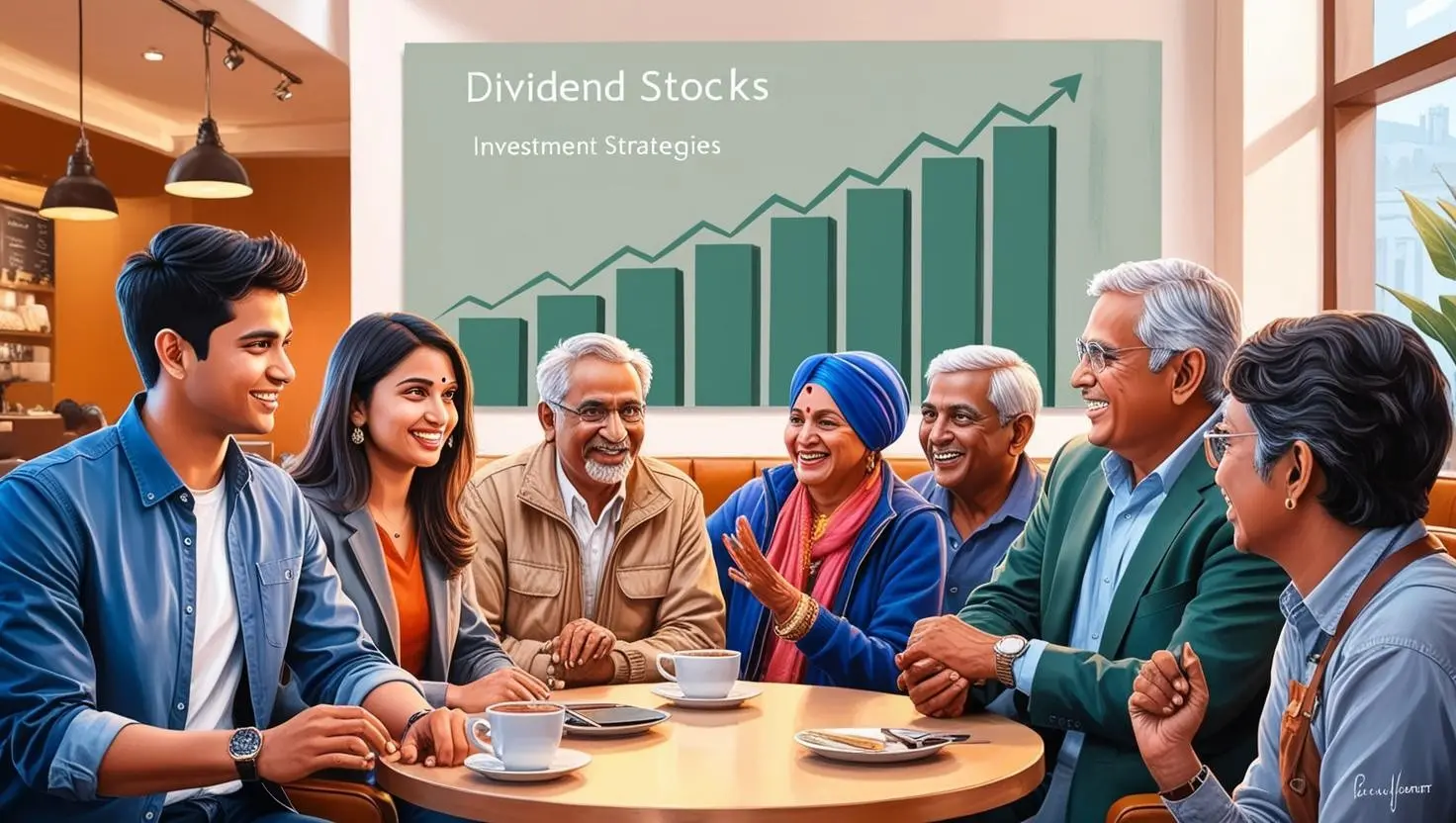Investing in the stock market isn’t merely about making quick profits; it’s about strategically building wealth over time, particularly in 2025. For Indian investors, understanding the best long-term investment strategies India has to offer is essential as the economic landscape evolves. This comprehensive guide will equip you with the knowledge necessary to navigate the complexities of the market, taking into account the recent economic indicators, tariff implementations by the U.S., market recoveries, and industry outlooks. With insightful examples and actionable strategies, let’s explore how to enhance your investment portfolio for the years ahead.
Understanding Long-Term Investment
Long-term investment involves purchasing securities intending to hold them for several years or decades. This approach allows investors to capitalize on the benefits of compounding, providing ample time for investments to appreciate in value.
In the Indian context, long-term investments are often channelized through various instruments, including equities, equity mutual funds, Public Provident Funds (PPF), and the National Pension Scheme (NPS). The rationale behind long-term investment is clear; over extended periods, equities typically deliver higher returns than most other asset classes, making them some of the best stocks for long-term investment.
Long-Term Investment Benefits
Investors engaging in long-term strategies reap several benefits:
- Compounding Gains: Not only do you earn returns on your initial investment, but reinvesting those returns leads to compounding growth over time.
- Reduced Transaction Costs: A long-term strategy involves fewer trades, thus minimizing brokerage fees.
- Emotional Resilience: Long-term investors are more likely to weather market volatility and avoid rash decisions driven by panic.
- Tax Advantages: In India, long-term capital gains on equity investments are taxable at a preferential rate, enhancing net returns.
Analyzing Market Trends for 2025
As we approach 2025, several macroeconomic factors and recent market trends will likely influence investment strategies:
U.S. Tariff Implementations
The U.S. has implemented significant tariffs on various products, affecting global supply chains and trade dynamics. For Indian investors, this may lead to opportunities as companies adapt to shifting market conditions. Industries that can pivot effectively, such as information technology and pharmaceuticals, may thrive as demand fluctuates due to these geopolitical changes.
Recent Fall and Recovery in the Indian Stock Market
In 2025, the Indian stock market faced challenges, including global factors, lower earnings and exit by Foreign Institutional Investors, however, recent trends show a pronounced recovery, driven by a rebound in the banking sector. The Nifty 50 and BSE Sensex have shown resilience, with the Nifty 50 surpassing pre-tariff crash levels, indicating a recovery from earlier downturns.

Economic Indicators and Industry Outlook for 2025
GDP Growth
- IMF Projection: India’s GDP growth forecast for FY2025 has been revised downward to 6.2%, primarily due to global trade tensions and tariff uncertainties.
- RBI Estimate: The Reserve Bank of India projects a slightly higher growth rate of 6.5%, attributing resilience to strong domestic consumption and investment.
Inflation
- Retail inflation has moderated to a five-year low of 3.34% in March 2025, largely due to declining food prices.
Monetary Policy
- In response to easing inflation, the RBI has implemented consecutive policy rate cuts, with the repo rate now at 6%.
Sectoral Insights
- Financials: Banks like ICICI Bank and HDFC Bank have reported strong earnings, propelling the Nifty Bank index to record highs.
- Information Technology: The IT sector faced challenges, with companies like Wipro forecasting a decline in sales, leading to a dip in the NIFTY IT index.
- Consumer Goods and Automobiles: These sectors are expected to benefit from improved rural demand and easing inflation.
Strategic Approaches to Long-Term Investment
Diverse strategies contribute to effective long-term investments, including: Buy-and-Hold Strategy, Growth Investing and Value Investing
Buy-and-Hold Strategy
The buy-and-hold strategy emphasizes purchasing equities and retaining them for extended periods. It allows investors to benefit from overall market growth, minimizing reactionary selling during downturns.
For example, investing in giants like Reliance Industries Ltd and HDFC Bank, known for consistent performance, is ideal for this approach. Both companies reflect resilience and adaptability, making them appealing long-term candidates.
Growth Investing
Growth investing targets companies anticipated to grow at an accelerated rate compared to industry peers. Industries such as technology and renewable energy present significant opportunities.
Stocks like Zomato and Paytm exemplify growth companies that are effervescent in their sectors, showcasing innovations that promise robust returns.
Value Investing
Value investing focuses on undervalued firms with strong fundamentals expected to rebound.
Examples of value stocks in India that may provide substantial long-term value include LIC Housing Finance and Canara Bank, which are often undervalued despite their solid operational capabilities.
Spotlight on Key Stocks
As we analyze stocks that have strong potential for long-term investments, consider the following:
- Reliance Industries Ltd: This well-diversified conglomerate is involved in multiple sectors, including telecommunications and greenery initiatives like solar energy.
- Infosys Ltd: As a top player in the IT sector, this company is known for its commitment to innovation and skilled workforce development.
- HDFC Bank: A cornerstone of India’s financial sector, HDFC Bank maintains a solid outlook with robust growth trajectory and customer outcomes.
While selecting stocks, it is crucial to consider companies’ strategic plans and adaptability to the changing market landscape.

Risk Management in Long-Term Investment
Investing in the stock market entails risks, making proper risk management essential. Effective practices include:
- Diversification: Spread investments across various sectors and asset classes to mitigate risks.
- Regular Portfolio Reviews: Frequently reassess investments to ensure alignment with your long-term goals and market developments.
- Stop-Loss Orders: Implement safeguards to limit potential losses if the market moves unfavorably.
By prioritizing risk management, investors can safeguard their capital while capitalizing on growth opportunities within the Indian stock market.
For short term strategies, you might find our article on Mastering Breakout Trading: Strategies for Success helpful.
Conclusion
The best long-term investment strategies for 2025 revolve around understanding market shifts, leveraging sector growth opportunities, and employing established investment methods. By focusing on resilient companies and employing effective risk management, investors can position themselves for significant returns over time.
Are you ready to embark on your long-term investment journey? Subscribe to the Stockastic blog for ongoing insights and to stay informed on the best investment strategies to grow your wealth successfully. Let’s achieve financial growth together!
Frequently Asked Questions (FAQs)
Long-term investment refers to the practice of buying securities with the intent to hold them for an extended period, typically several years or decades. This strategy is aimed at benefiting from compounding returns and allowing investments time to appreciate in value.
Long-term investing offers multiple advantages, including compounding gains where profits generate additional returns, reduced transaction costs from fewer trades, emotional resilience in the face of market volatility, and favorable tax treatment on long-term capital gains in India.
U.S. tariff implementations can lead to shifts in global supply chains and create new market dynamics. For Indian investors, this scenario might offer opportunities, particularly in sectors like information technology and pharmaceuticals, as companies adapt to changes in demand.
The buy-and-hold strategy involves purchasing stocks with the intent to hold them over the long term, regardless of market volatility. This approach allows investors to benefit from overall market growth and reduces the need for reactionary selling during downturns.
Growth investing focuses on companies expected to grow at a faster rate than their peers, often in dynamic industries like technology. In contrast, value investing targets undervalued companies with solid fundamentals that are likely to recover, providing opportunities for long-term gains, especially in pressured sectors.
I


